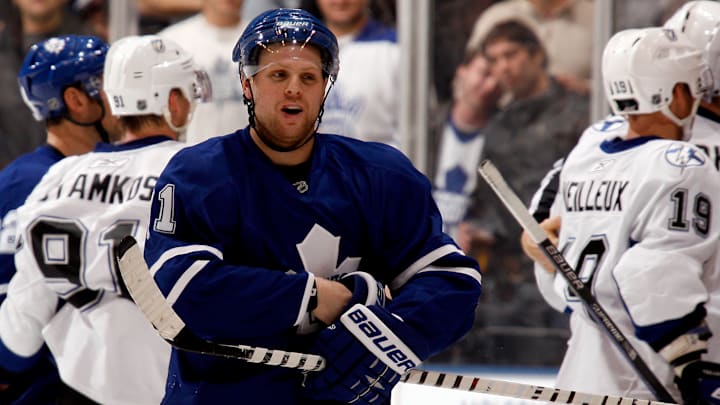The Toronto Maple Leafs pulled the trigger on a franchise-altering trade in September 2009. The Toronto Maple Leafs acquired Phil Kessel from the Boston Bruins for a king’s ransom.
That trade was a huge swing that then-GM Brian Burke wanted to make. He was keen on transforming the Leafs from the middling team it had become following its memorable playoff runs from the early 2000s, into a Cup contender.
Kessel, who had been the fifth-overall pick in the 2006 draft, was an RFA at the time. The Bruins weren’t on track to sign him and decided to move him. Several teams were in on Kessel, but it was the Maple Leafs who came up with the best offer.
In the end, it took two first-round picks and a second-rounder to pry Kessel away from the Bruins. As we know, the 2010 first-rounder turned into Tyler Seguin, and the 2011 first-rounder became Dougie Hamilton.
Now, for the sake of this thought experiment, we’re going to assume that the trade never happened and the Leafs took Seguin in 2010 and Hamilton in 2011.
How would that have transformed the fortunes of both the Maple Leafs and the Pittsburgh Penguins (as we shall consider later on)?
First of all, the Maple Leafs would have had a franchise center in Seguin and a top-pairing defenseman in Hamilton. That situation would not have prompted the team to deploy Tyler Bozak as a top-line center. Moreover, the team could have held on to Luke Schenn, Matt Stajan, and Tomas Kaberle.
There’s also a chance the Dion Phaneuf trade would have never happened. So, instead of Burke’s Kessel-Phaneuf leadership group, it could have been Seguin and Hamilton.
The goaltending would have still been an issue, and there’s no telling if the Leafs would have been much better than they really were. But it’s tantalizing to think that the Leafs could have avoided nearly a decade of futility and the Great Tank of 2016.
Passing on Kessel trade would not have landed Auston Matthews for Maple Leafs

This thought experiment assumes the Leafs would have been much better than they were from 2009 to 2016. The club could have made more than one playoff appearance. It could have held onto Nazem Kadri and potentially never drafted Morgan Rielly.
Since the Leafs would have been much better, they would have never had such high first-round picks. So, Mitch Marner would not have been drafted fourth overall in 2015, and, most importantly, the Maple Leafs would not have been in a position to tank in 2016.
By not tanking, the team would have never been in a position to draft Auston Matthews. Matthews would have gone somewhere, and who knows who the Leafs would have ended up with that season?
Had the Maple Leafs won a Cup, it wouldn’t have made much difference. The Cup would trump Matthews. If Matthews never wins a Cup in Toronto, this conversation would be moot. But if he does, this debate about what-ifs would take on an entirely new dimension.
If the Kessel trade had never occurred, the Leafs would have never drafted Matthews, and the Leafs would have never won a Cup.
As an addendum, the fortunes for the Pittsburgh Penguins could have also changed. It’s fair to assume that if Kessel had never landed in Toronto, he would have never been traded to Pittsburgh. Then, it’s possible to believe that the Penguins may have never won the back-to-back Cup they did with Kessel in the fold.
Perhaps they still do. Those Penguins clubs were that good.
But it was Kessel who pushed them over the top. It’s incredible to imagine the butterfly effect that would have been unleashed had Phil Kessel never landed in Toronto.
